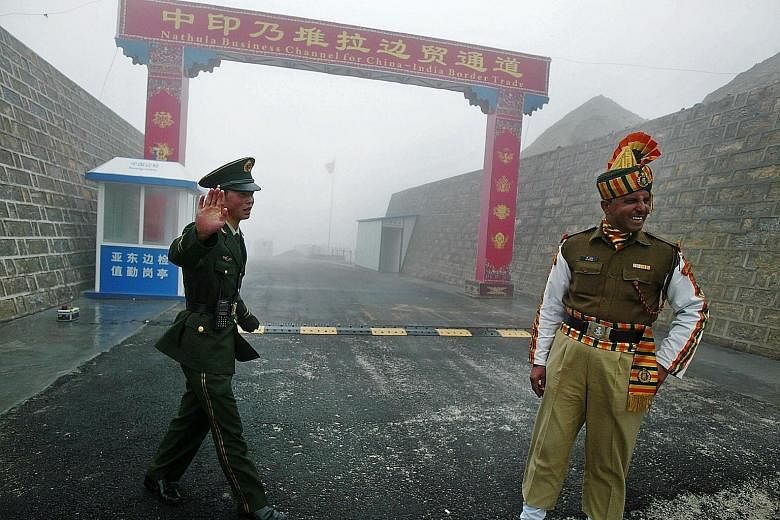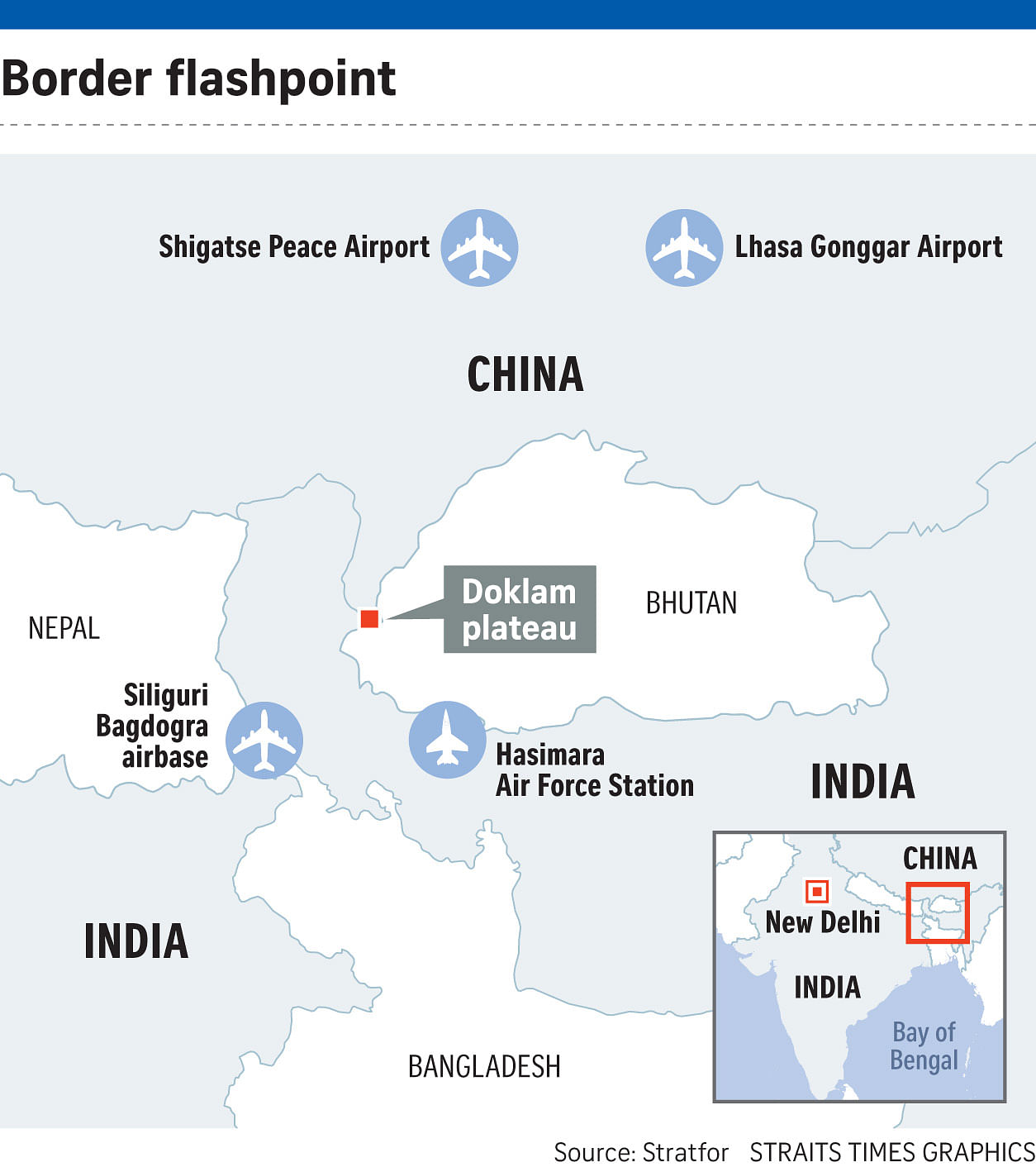China and India could soon be facing another border flare-up, according to analysts and think-tanks, following a build-up of defence capabilities over the past four months near the Doklam plateau.
The two countries were involved in a stand-off there that lasted more than two months last year.
Doklam is at a tri-junction area between India, China and Bhutan.
Tensions erupted last year in the area after Indian border forces intervened on June 16 to stop Chinese engineers from building a road in an area claimed by Bhutan and China.
India backs Bhutan's claims in the area, which is strategically close to a narrow stretch of land in India known as the Siliguri Corridor, or "chicken's neck", which connects seven north-eastern Indian states to the mainland.
Now reports in the Indian media and analysis of satellite imagery by experts suggest that both countries have built up capabilities near Doklam, with the scale of the Chinese build-up larger than the Indian one.
"Recent satellite images suggest that both are building defences, with China having enhanced more capabilities," said Dr Srikanth Kondapalli, a professor in Chinese Studies at Jawaharlal Nehru University.
"If both are stiff on their positions, then we could see another incident. This is most likely. What is clear is that both are standing their ground. China reportedly sent 1,800 troops despite cold weather in Doklam."
Stratfor, an American geopolitical intelligence platform and publisher, in an assessment of recent satellite imagery of two Chinese and two Indian airbases, said a "strategic build-up has accelerated" particularly on the Chinese side since the Doklam stand-off was resolved on Aug 17 last year.
Satellite imagery of China, the report noted, showed a significant presence of fighter aircraft and a notable increase in helicopters at two nearby bases. It said that China made a number of airfield upgrades at Shigatse Peace Airport, which is 225km from Doklam, including construction of a new runway in mid-December and eight new helipads.
India, on the other hand, has increased its deployment of Su-30MKI fighter jets to the Siliguri Bagdogra airbase and the Hasimara Air Force Station, which are 97km and 70km, respectively, from Doklam.
The Stratfor analysis said this depicts how India has moved to reinforce its air power close to the Doklam plateau, while concluding "it is only a question of time until a new flashpoint along the LAC emerges".
The LAC is the Line of Actual Control, or the de facto border between the two countries.
India and China dispute several areas of their nearly 4,000km-long border, which is poorly demarcated in many areas.
While border rows flare up intermittently, the two countries made a decision in the 1990s to not allow the border row to impact other areas of the countries' relationship.
As a result, economic ties have grown, with China remaining India's top trading partner.
Yet the Doklam crisis has been one of the more serious flare-ups between the two countries in recent times. While it was resolved with China stopping construction of the road, analysts conclude that the dispute is far from over.
"A flare-up will happen if India again tries to stop the building of roads. They (China) never gave commitment that they will never build again," noted Professor Sreemati Chakrabarti, honorary fellow at the University of Delhi's Institute of Chinese Studies.
Former Indian foreign secretary Lalit Mansingh noted: "It will still be an irritant with all the things the Chinese are doing in the neighbourhood, including claims on Indian territory like Arunachal Pradesh. It's going to keep India on its toes. But I doubt if there will be an outbreak of warfare."
For now, India has dismissed any media reports suggesting a build-up at Doklam itself. The Indian Ministry of External Affairs, in a statement in mid-January, noted that the status quo at the face-off site has not been altered and noted that "any suggestion to the contrary is inaccurate and mischievous".
More recently, Indian envoy to China, Mr Gautam Bambawale, in an interview with state-run Chinese daily The Global Times published on Jan 25, said that it is crucial to not change the "status quo" at sensitive points in the India-China border and suggested that the two countries should hold talks, including on the China-Pakistan Economic Corridor.
Still, analysts noted that neither India nor China wanted a spike in hostilities.
Mr Mansingh said: "India is worried about the strategic implications of Chinese activity in Doklam. But publicly, the (government) line seems to be to not say anything provocative about China."


